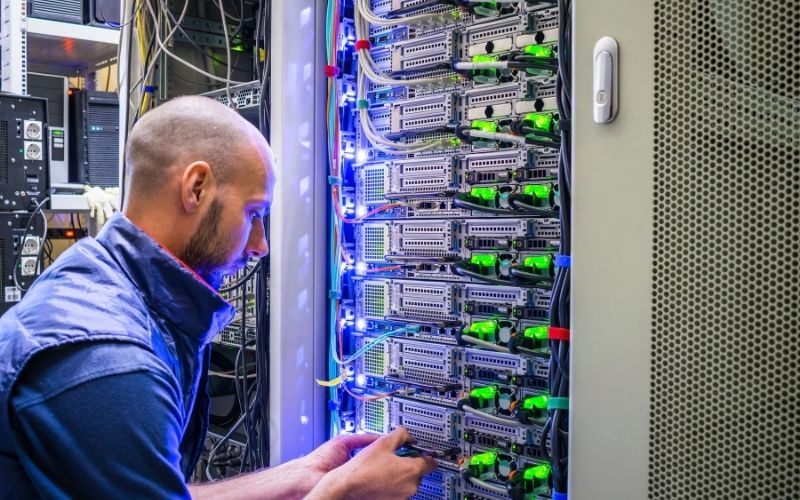
Suppose your company plans to build a data center. In that case, you may feel overwhelmed with the idea of installing data racks. It can be a big job, but it doesn’t have to be exhausting. We’ll discuss a few tips to simplify your experience and outline three mistakes to avoid when installing data center racks.
Not Planning Appropriately
The planning phase of any project is one of the most important. What will you do if you don’t know where you’re going? If a map is a key to any plan, this is undoubtedly true for a data rack installation project. You should know how many racks you need to install, size specifications, what room the racks will be in, and the room’s square footage to measure capacity.
The last thing you want to do is buy racks that can’t fit in the room you want or that aren’t the right dimensions for your equipment. Consult the handbook from your server rack manufacturer for measurements. Planning takes the guesswork out of all these factors, so make sure you have a map of the area before starting your project.
Not Setting up the Appropriate PDU
Finding the appropriate power distribution unit (PDU) is crucial to installing data center racks. The PDU is a device with multiple outlets designed to distribute power to computers, servers, and other electronic devices. It’s vital that you get the right one for your needs. Check its PSU voltage capacity. Make sure it can handle whatever voltage you need for your equipment. The higher its capacity, the more power it can distribute without causing power failures or malfunctions.
Vertical PDUs are popular since they don’t take up any rack space. Instead, they’re installed along the vertical axis of the rack. Vertical PDUs leave more space to place equipment. Not setting up the appropriate PDU is one of the most serious mistakes to avoid when installing your data center racks as it can cause all manner of malfunctions.
Not Labeling Your Cables
Most data centers will likely have many racks that house a ton of equipment. The more equipment you have, the more cables you’ll have to deal with. As anyone with multiple electronics can tell you, cables can quickly get out of control. Not only can they tangle, but they’re also a fire hazard. Additionally, troubleshooting when your equipment is on the fritz is a nightmare with a tangle of wires.
You can easily spend a lot of time trying to untangle the cables and follow the one you need to the right power outlet. To avoid this issue, label your cables and have some organizational system in place.
Having a blueprint in place for your project is necessary. Following this short guide should give you insight into the best way to install your racks for future use.
